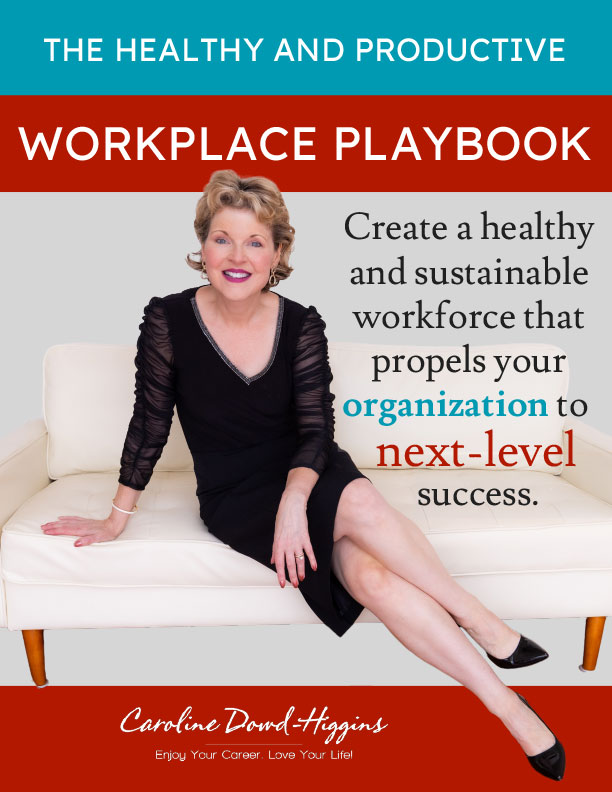Stop Waiting to be 100% Ready – Just Do it!

As a career development and executive coach, I work with many individuals who are focused on making changes to their lives and careers to better align their values and strengths. But for some, their best plans often get stalled in analysis paralysis, which results in stagnation and a hard stop to forward momentum.
Perfection is Impossible
Let go of the debilitating mindset, “I’ll be ready when…” and focus on what you can do now. Striving for perfection or absolute readiness is unrealistic and a waste of precious energy that you can be focusing on getting something done, which you are ready for now.
Career perfection is unattainable so focus on your personal best and get comfortable being a lifelong work in progress. Be open to the paradigm that success is 10% skill and 90% collaboration and ramp up your willingness to work with others to accomplish great things.
The Overthinking Trap
Melody Wilding wrote a great piece in the Harvard Business Review about the types of overthinking and how to overcome it. Here is a condensed version of her insight:
Overthinking can take three forms: rumination, overanalyzing, and future tripping. Here’s how to spot and handle each one — before they cause you to spiral, stress, and ultimately burn out.
Rumination. This is a mental loop where you dwell on past events, particularly negative or distressing ones. If you tend to fixate on negative feedback, bring up past failures in conversation with others, or you’re overly cautious about work, you might be a ruminator. To diffuse your rumination, set aside 15 to 30 minutes to grapple with these negative thoughts. This will help you compartmentalize and stop yourself from ruminating constantly throughout the day.
Overanalyzing. Procrastinating, over-relying on others’ approval, and having trouble prioritizing are all tendencies of over analyzers. To break the cycle, shift your aim from “perfect” to “good enough.”
Future tripping. If you spend excessive energy planning for every possible scenario, or you find it hard to celebrate your successes because you’re always thinking about what’s next, you’re likely a future tripper. To address it, use your forward-looking tendencies to your advantage by projecting yourself into a future where the stress of this moment is behind you.
Prototype, Test, Repeat
Design Thinking is a creative, iterative approach to problem solving that places humans at the center of the process. The Standford d.school offers a fascinating online crash course in design thinking fundamentals, should you wish to explore more.
I employ Design Thinking methodology in career development and leadership coaching to help clients utilize the process to try new things and test and get feedback so they can make well informed decisions on their career journey.
Getting stuck often equals being fearful about the unknowns on the other side of an equation. By prototyping, you create a representation of one or more of your ideas to show others. Think of it as a rough draft and share within your professional circle of trust and ask for feedback. What worked? What didn’t?
By repeating this process with as many new concepts that you are considering, you gain valuable insight by crowd-sourcing feedback. The process is by nature, forward moving and gives you opportunities to turn ideas into prototypes and eventually realities.
Good Enough to Go
One of the reasons I appreciate Design Thinking is that the ideation and prototyping phases of the process need not be 100% refined or polished. Ideation gives you permission to come up with multiple creative solutions to prototype and eventually test. Big hairy audacious goals are encouraged!
Seasoned designers relish the phrase, “Good enough to go” because they know in most cases you can continue to refine the concept, product, or idea. Think of the Apple iPhone and its many iterations. I am confident there will be more to come. Rarely is something absolutely done.
A Relatable Example
Some people get stuck because they have too many goals. They get overwhelmed and shut down. Focus on small and incremental moves. Think in baby steps and how you can achieve something small and simple on a regular basis to move you towards the end goal.
One of my clients works 70+ hours a week all year long, which is relatable to many reading this piece. He is exhausted and burned out. He is a high-ranking executive in his company and has the authority and the power to work more realistic hours, but he is stuck in his own way and resistant to dialing back.
His design experiment is to try a single week working 40 hours (no cheating) and to chronicle how he feels, what changes at work and at home, and report back. It’s a simple, no-risk experiment that could lead to a much better work/life fit. His stumbling block is – What will people think? And I predict the results of a 40-hour week test-drive will be very positive and affirming of his much-needed change.
I shared a meme with my client that said: In 20 years, the only people that will remember you worked late, on weekends, and during vacation is your family. This was his catalyst for change.
Ultimately, you alone have control over your career and life. The roadblocks to stagnation are real and debilitating so give yourself permission to consider how you can unblock and be good enough to go today. Ask yourself daily, “What is the single action I will commit to in order to move forward one step today?” Onwards!






